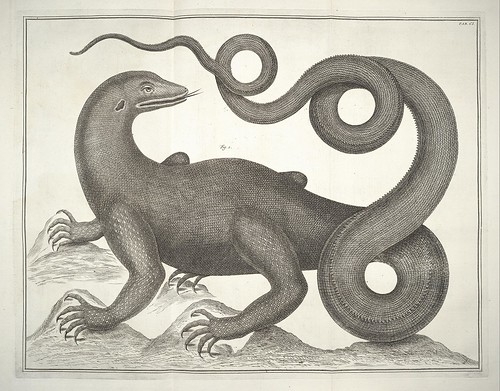
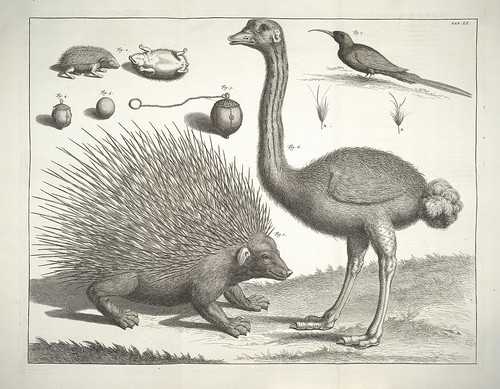
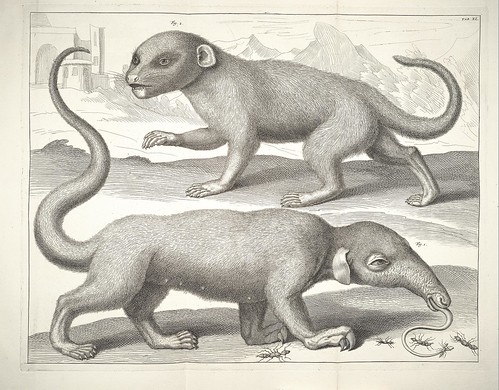

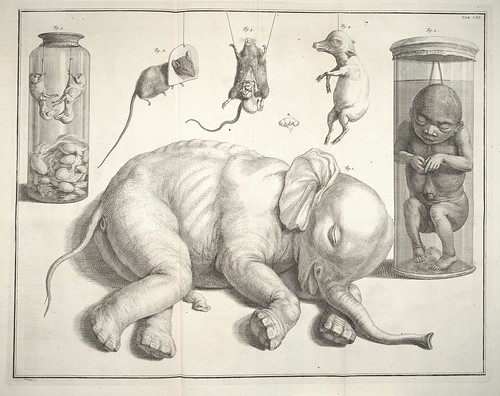
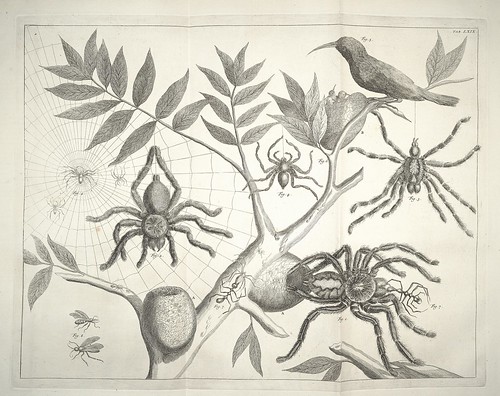


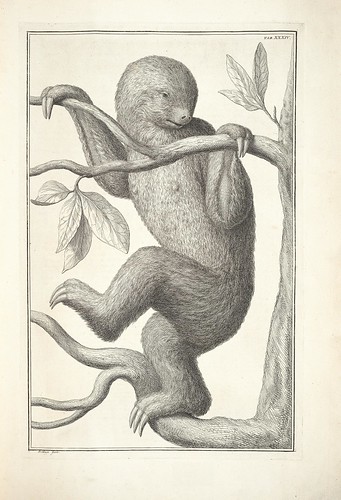
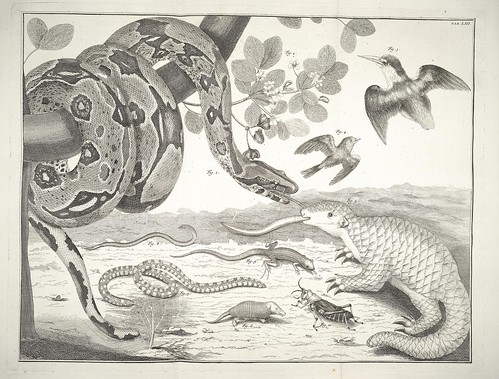
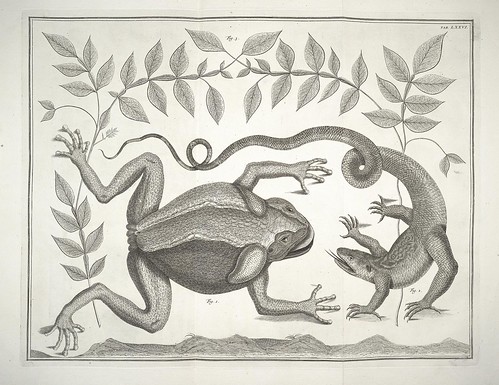

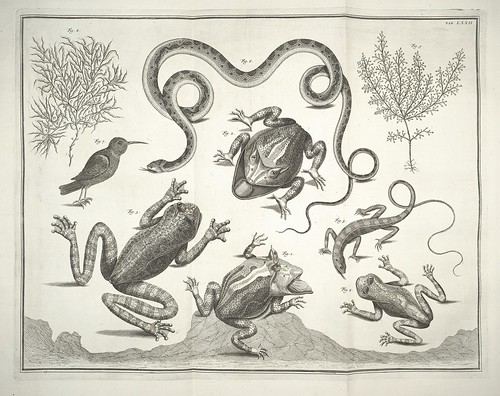


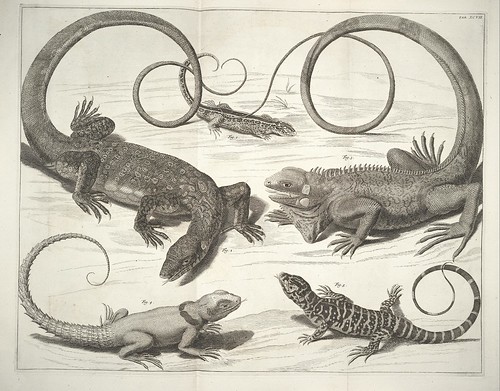
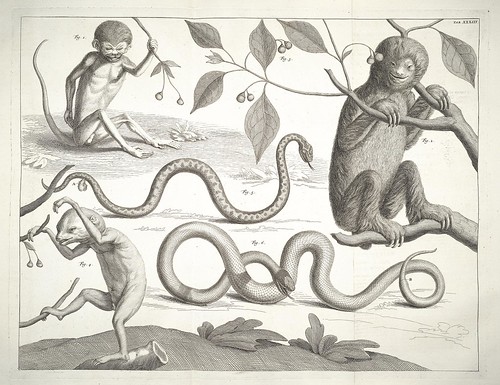
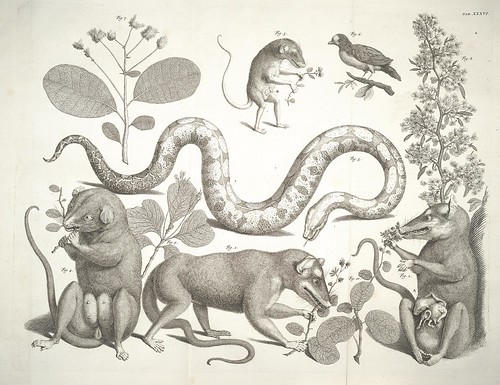
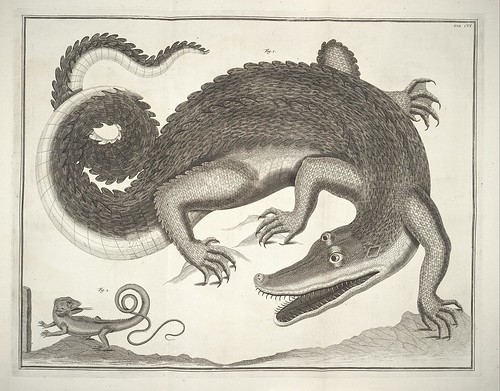
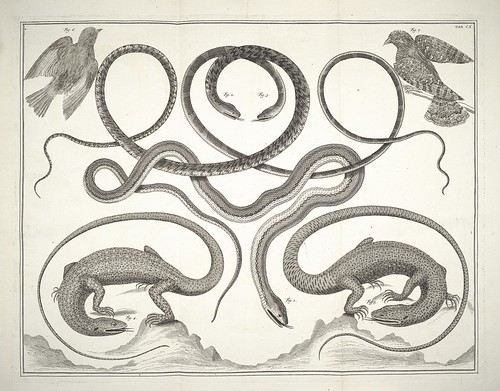
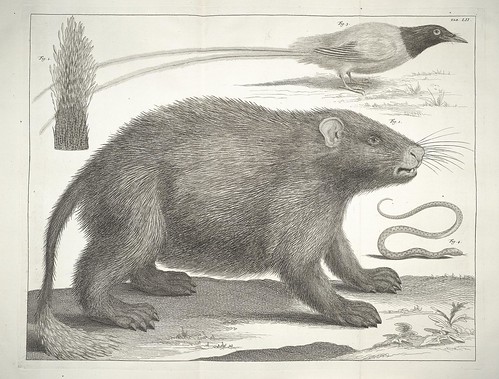
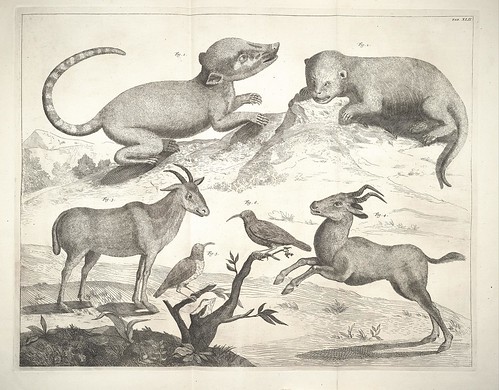
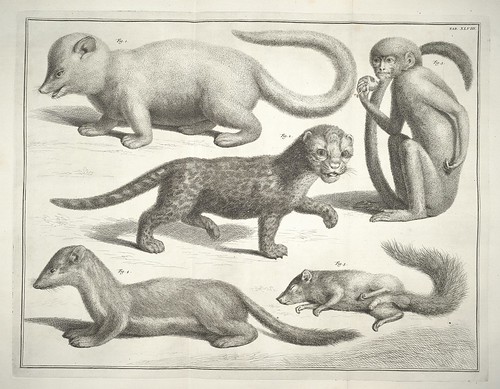
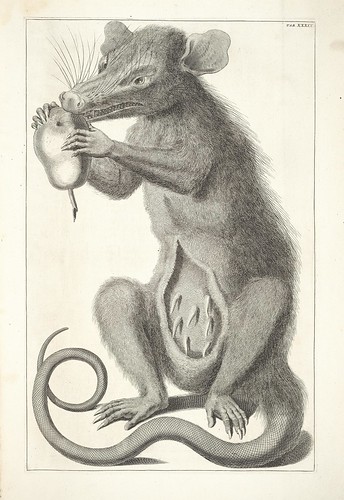
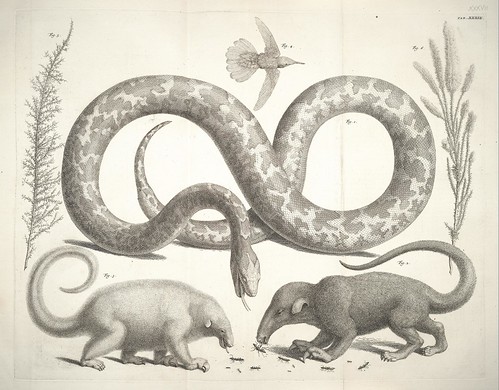
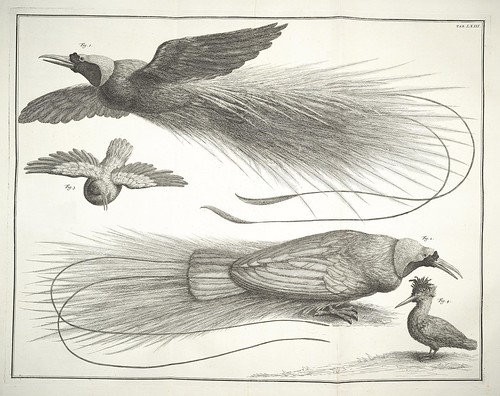

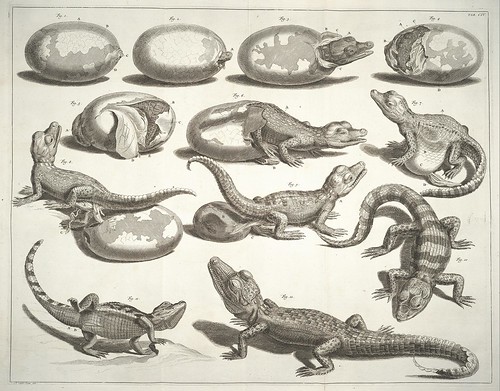
The images above come from Volume One of 'Locupletissimi Rerum Naturalium Thesauri' by Albertus Seba, 1734, newly available from the Missouri Botanical Garden's Botanicus website.
More than a hundred plates are accessible and can be individually downloaded in enormous jp2 image files. I have uploaded very large images to flickr, but the source site is the place to go for the 7000+ pixels-wide versions. We must thank blind luck for my even bothering to load this book; fairly obviously I can only look at a very small amount of material that passes across my screen and I didn't recognise the title. It was a totally random click.
I have posted a few plates from Seba previously and Mr H uploaded some photographs of other images a few years ago, but relatively few good quality scans from Seba's renowned publication have been easily accessible on the web before now. Two other sources I know of are: the University of Göttingen Volume I and Volume IV; and the Digital Library at Gdansk University of Technology appear to have a complete (microfilm) scan of the series. The quality of images at each of these sites is less than wonderful however. Let's hope Botanicus proceeds to digitise the remaining three volumes. There are more than four hundred plates in total.
"Albertus Seba's "Cabinet of Curiosities" is one of the 18th century's greatest natural history achievements and remains one of the most prized natural history books of all time.That quote is taken from the Taschen site. They published an oversized (hand-coloured) facsimile version of Seba's 'Cabinet of Natural Curiosities' a few years ago and by all accounts it is a superb production. [Amazon page]
Though it was common for men of his profession to collect natural specimens for research purposes, Amsterdam-based pharmacist Albertus Seba (1665-1736) had a passion that led him far beyond the call of duty. His amazing, unprecedented collection of animals, plants and insects from all around the world gained international fame during his lifetime. In 1731, after decades of collecting, Seba commissioned illustrations of each and every specimen and arranged the publication of a four-volume catalog detailing his entire collection-from strange and exotic plants to snakes, frogs, crocodiles, shellfish, corals, insects, butterflies and more, as well as fantastic beasts, such as a hydra and a dragon.
Seba's scenic illustrations, often mixing plants and animals in a single plate, were unusual even for the time. Many of the stranger and more peculiar creatures from Seba's collection, some of which are now extinct, were as curious to those in Seba's day as they are to us now."



















5 comments :
This is a most remarkable set of plates - for the exciting and satisfying tension between the different purposes of natural illustration and design stylization.
Possibly my favourite post here this year. I _love_ old natural history drawings. It doesn't surprise me that this particular publication is held in such high esteem. The detail, the composition, the strange animals, the exploration of anatomy, the coiling snakes are all superb.
Great weird animals (real and imaginary)! But then you know I like that stuff.
There's a weird primate thing on the page with a sloth, a monkey 2 snakes and some kind of berries.
He looks like he's dancing. The berries with a leaf look like musical notes! :)
I had the new colored version of the book for a while but oi had to return it to the library it came from. It was HUGE! I need to order it again so I can write about him in my thesis.
Thanks for posting these great links and images.
Post a Comment
Comments are all moderated so don't waste your time spamming: they will never show up.
If you include ANY links that aren't pertinent to the blog post or discussion they will be deleted and a rash will break out in your underwear.
Also: please play the ball and not the person.
Note: only a member of this blog may post a comment.